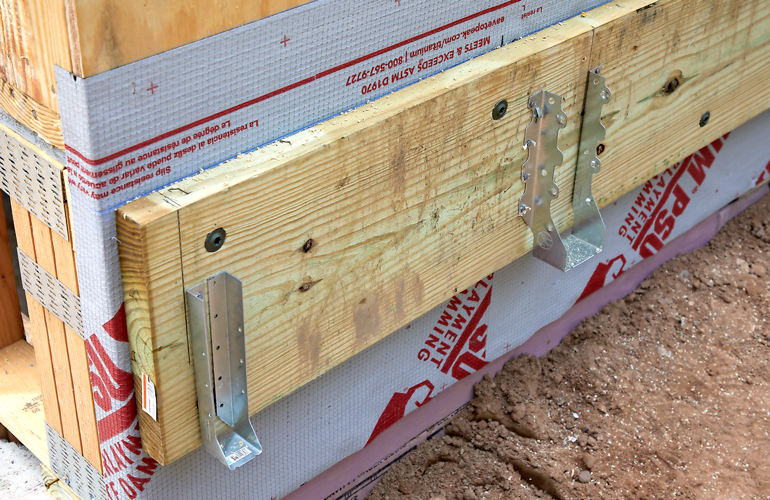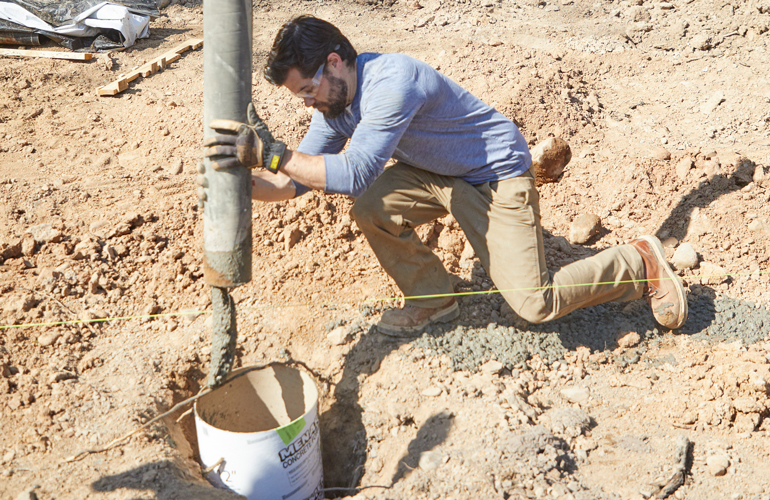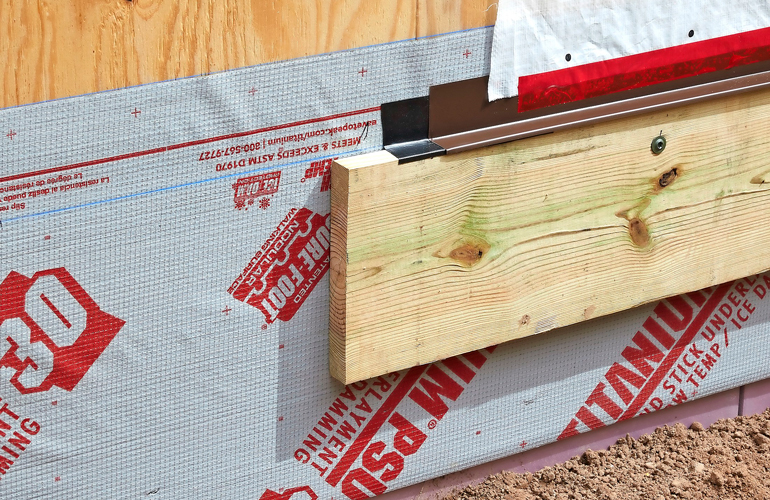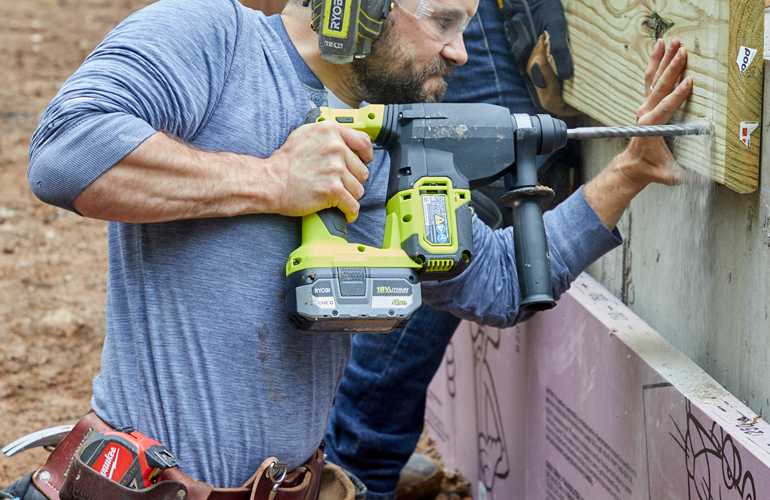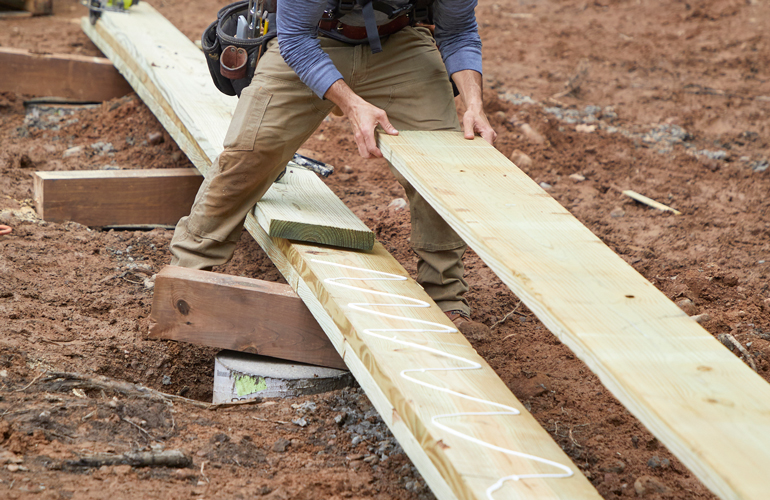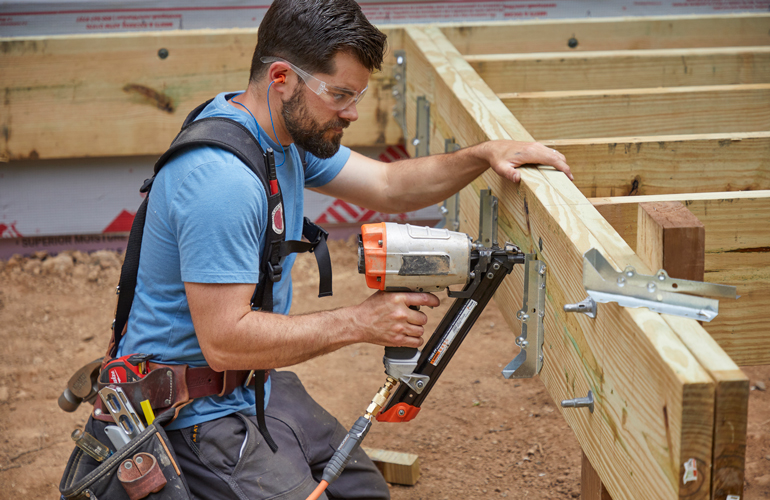Building your own deck
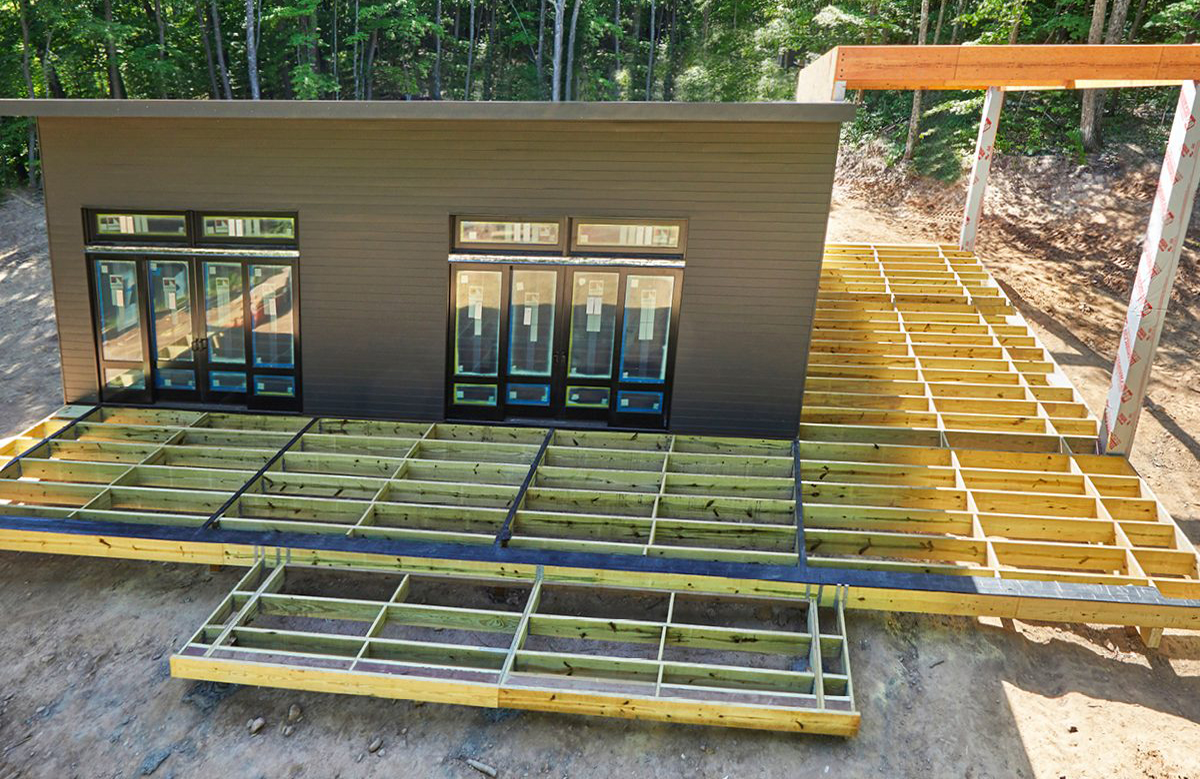
Deck building is one of my favourite DIY projects. But whenever I start planning one, I’m reminded of the head-scratching work required before I can start swinging a hammer. Over the years I’ve refined critical steps and fixed common gaffes. Here is my process, along with a few tips, to help you nail your deck building project from start to finish.
Start with a sketch
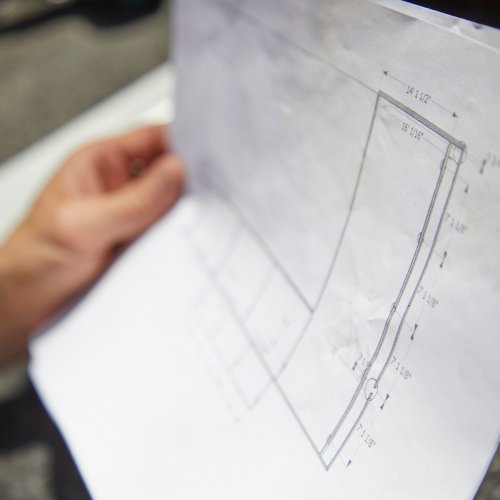
I start off every deck build by drawing the shape and proportion of the deck as well as the orientation of the decking. It’s helpful to include property landmarks: your house and doors, shed, fences, etc. I use graph paper to maintain scale.
Here are our 11 best tips for planning patios, decks, outdoor kitchens and bars.
Mind the overhang
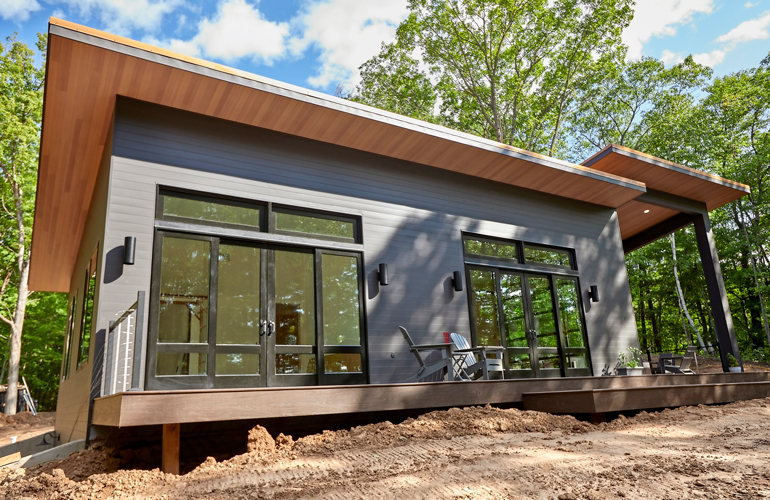
When you finalise your deck size, shrink it by 38mm on all sides that don’t attach to a house. This will be the dimension of your deck framing. A 13mm skirt covers the framing and the deck boards will hang over that by 25mm.
Check out our video on how to build a steel framed composite deck.



